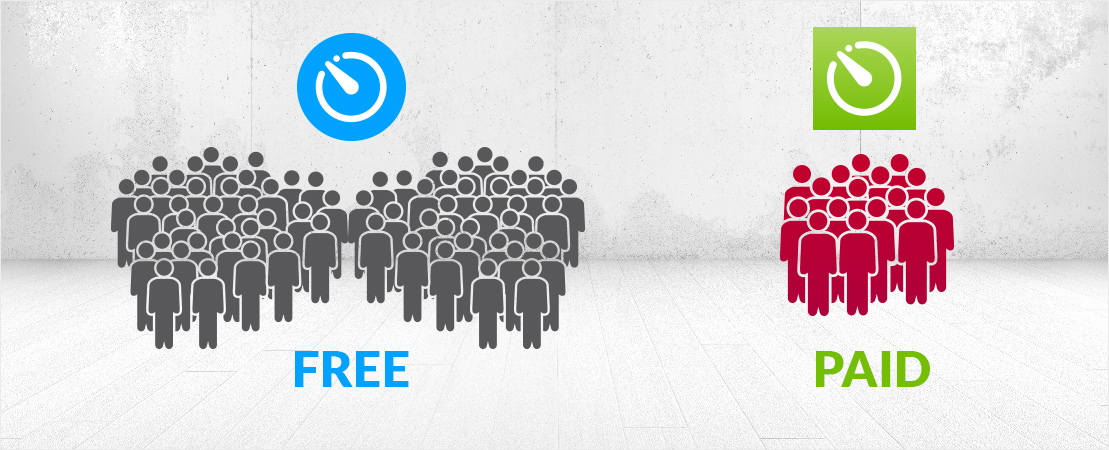As consumers go mobile in their tens of millions, large corporations and conglomerates are rushing to satisfy the demand, predominantly through the creation of their very own Mobile Application. But it’s not just these larger organizations that are embracing the phenomenon that is Mobile Apps. Many Small Businesses too, are starting to realize the extensive benefits this Digital Technology can have for their Business. Simply put, nowadays, having just a mobile responsive Website isn’t just enough.
But before you dive head first into your Mobile App endeavors, there are some crucial considerations you need to take into account, to make sure you’re giving your customers the very best possible resource. Keep reading to find out the 7 things you absolutely need to consider when creating your Small Business App.

1. Do Your Research and Set Your Goals
Just as you would research and plan any Business strategy, the same is true when developing your Mobile App. Enthusiasm is great, but if you go in blind without any prior knowledge, chances are you’ll wind up creating a sub-par product.
Knowing what you want from your App is absolutely pivotal before you get started. Consider which elements are most essential to your App’s success, and what goals you’re trying to achieve? Is the App offering a booking service, or is it an Ecommerce platform additional to your Online Store? Think about what would appeal most to your target audience and go from there.
It’s also important to conduct research on your competitors. Find out how the most successful Apps are appealing to their customers and try to replicate the same methods for your Small Business. Reading customer reviews will also be helpful during this stage, as it will give you an idea of what your audience both likes and dislikes in a Mobile App. Once you have gathered this data, you’ll have the information which could allow you to create a product that could see you win over your competitors’ customers.

2. Create an App That’s Unique
Mobile Apps consume data storage space on a user’s mobile, which is why they’re unlikely to download multiple Apps that perform similar functions. For this reason, you need to ensure that your App isn’t just the best, but also offers a unique point of difference from your competitors’.
One of the best ways to ensure your App stands heads and shoulders above the rest is by making it completely relevant, user-friendly and ensuring that it adds value to the consumers every-day experience. Not all Apps have the advantage of being a daily part of someone’s life, so try find a way to make yours an unmissable part of someone’s daily routine, and you’re already leaps and bounds ahead of the pack.
While there are a lot of Apps available from the App or the Play Store, many of them are quite forgettable. Make sure yours is one that your audience wants to use regularly, that way they’ll allow it to stay in their screens.

3. Loading Time
Just like waiting in a long queue at the bank, it can be frustrating for users to wait for your Mobile App to load. And the longer it takes, the more likely you’ll lose your customers.
We live in a fast-paced digital world, where consumers are demanding the instantaneous with ferocious intensity. If you offer them a slow loading App that takes more than 5-10 seconds to load properly, chances are it’ll end up straight in their phone’s trash. Aside from this, the user could begin to make negative associations with your brand, thinking of your Business as unreliable or out of date. Ouch.
Keep your App’s design simple because the more complex it is, the more data it will need to download. Besides, what’s more important is that you provide the best functions to make it easier for your consumers when making a purchasing decision.

4. Free or Paid Mobile App
While you do stand to gain some Return on Investment by choosing to opt for a paid App, you could be significantly reducing the amount of people who actually use and download your App.
According to Statista, 14.78 billion paid Apps were downloaded worldwide in 2017. Sounds like a lot doesn’t it? Well, this number positively pales compared to the 253.91 billion free Apps which were downloaded. This number alone proves that by making your Mobile App free, you’re likely to receive a much larger number of downloads.
While offering a free App may sound like wasted efforts, it’s still more than possible to make a profit out of this strategy. Perhaps you’re creating an Ecommerce App which’ll allow for in-app purchasing, or else making it easier for people to book your Businesses’ services. Furthermore, you have the chance to gain profit through advertising other Businesses or products through your App.

5. Concentrate on Your Marketing Strategy
As mentioned previously, there are literally thousands of Apps in the App Store just like yours. For this reason, you’ll need to come up with a solid marketing strategy that allows you to effectively advertise your product and appeal to your target audience if you want to get noticed.
Make sure you’re consistent with your Marketing efforts, making sure that your App maintains the same tone, voice, design and character of your Website and Social Media Platforms. It’s also a great idea to promote your App via these other sources. Consider doing a small Marketing launch of your App by promoting it on your Website and Instagram, Facebook, Twitter or YouTube channel, offering giveaways or competitions as incentives to download your App.

6. Provide a Clear and Concise Description
Before anyone downloads an App from the App or Play Store, one of the first things that they’ll probably do is read the description. For this reason, the information you provide regarding your App needs to be clear, concise and, most importantly, get the reader excited about using your App!
In the App Store, the description box only shows 2-3 lines of your whole description before the reader needs to click “Read More” to see the rest of the information. This means that you need to make the first few lines of your description as enticing as possible, and impart as much information as you can in this short space. Stick to the basics: what your App does, and why they NEED it! Once you’ve established this, then you can move onto the details and more explicit features of the App.

7. Test your App Beforehand
Once your App’s developed, it’s then ready to launch into the market! How exciting! But wait just one second. Before you throw it out there to your target audience, you need to test it. Test it once, test it again…and again.
By thoroughly testing every component of your App, you can ensure that every feature is up to scratch and working just as you intended. Try testing it on different sources too; Desktop, Mobile and iPad should all be checked, to make sure it’s best optimized for each.
As well as testing it yourself, you can use ‘beta testers’, which are a group of people who will be able to critique your App with the most honest opinions. While it’s possible to do a public beta launch, wherein everyone can try your App and gain more insights, it’s still better to do it privately with a selected group of people to get more focused and specific data. There are a lot of App testing








